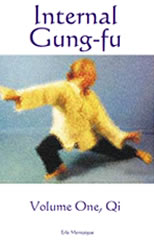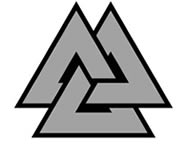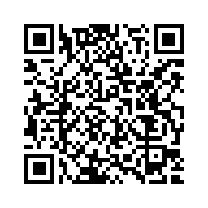
Author : Montaigue Erle
Title : Internal Gung-fu Volume One, Qi
Year : 1995
Link download : Montaigue_Erle_-_Internal_Gung-fu.zip
Nowadays, there are literally hundreds of different martial arts systems. With the proliferation of martial arts movies, people are now familiar with those martial arts such as karate, gung-fu (kung fu) aikido and Taijiquan. And although we are able to break for instance, karate up into many different styles and gung-fu also into many different styles, there are still basically only two major systems into which all martial arts can be categorised. The most widely spread categorisation of martial arts in the West would have to be the ‘so-called’ hard styles into which would fall the arts such as karate, taekwondo and many of the ‘hard style‘ gung-fu systems of China. These would include those such as wing chun, choy lae fut, hung gar and Shaolin Temple boxing. It is said that all of the hard systems have come from this one source, the Shaolin Temple. Meaning Little Forest, the Shaolin Temple is hundreds of years old and has been re-built some three times with the most recent incarnation being around five hundred years ago. Nowadays, for most serious martial artists, this ‘modern’ temple is a bit of a joke, with the original essence of the martial arts taught there being lost a long time ago. Now, it is really a tourist destination and a place for television programs to shoot some filler, some quirky spot for their programming, for some pretty or handsome interviewer to go ga ga over some young lad having bricks broken over his head etc. In China however, the most widely spread and practised martial arts are those that fall into the soft category, or the internal styles. Martial arts such as Taijiquan (t’ai chi) which is the most widely practised martial art in the world with millions of people practising each morning in China, and Baguazhang , the lesser known and even lesser known, H’sin-I, are classified as being of the internal variety. Although Taijiquan is practised by more people than any other martial system, not many, in fact, probably only a very small percentage actually practice this once great martial art as a martial art, or self defence system. Most people even in China practice only for the great healing benefits that this art can give. In modern times, Taijiquan, meaning “supreme ultimate boxing”, has become very popular with its introduction to the USA and the West in general. And although only a relatively small number of people practice Taijiquan in the West, it can still lay claim to the most popular ‘martial art’ because of the huge number of people practising the art in China. Taijiquan is said to be the ‘Mother’ of all the internal martial arts systems with Baguazhang being the daughter or sister and H’sin-I being the son or brother. Most experts agree that, out of Taijiquan was born the other two arts. All have the same internal movement of energy (Qi), with only the external movements distinguishing the three as separate martial systems In China even today, not many will take on all three of the internal systems as it is said that it would take three lifetimes to learn all three. So most tend to learn Taijiquan as their main system, and then specialise in either Baguazhang or H’sin-I. So Taijiquan is always learnt as the primary martial art, with Baguazhang or H’sin-I being learnt at some later stage. Although there are many schools that only teach only one of the three, it is always much easier to learn Baguazhang or H’sin-I ch’uan after one has learnt Taijiquan. The reason is that it is relatively easier to learn the difficult parts of the internal systems by learning Taijiquan first. And as all aspects of both Baguazhang and H’sin-I ch’uan are found in Taijiquan, the student is half way there when he or she begins their bagwa of H’sin-I training. However, it does not work the other way around. It is not easier to learn Taijiquan once having learnt bagwa or H’sin-I as both have taken certain aspects of Taijiquan and specialised in those, rather than taking the whole Taijiquan. Unfortunately, most modern Taijiquan schools would disagree and onlookers would also disagree, as modern Taijiquan contains little of its former glory in the martial arts area. It is difficult to see for instance, where the explosive movements of H’sin-I fall in, and also the powerful twisting movements of bagwa. In modern Taijiquan, these powerful movements are non-existent. So, we must look towards the older styles of Taijiquan to see where the other two internal systems have come from. The Taijiquan system known as the ‘pinnacle’ of all martial arts systems back in China some two or three centuries ago, is now called, the ‘old Yang style’, or the ‘original Yang style’ or the ‘Yang Lu-ch’an’ style of Taijiquan, named after its founder. Back then, however, it was not even called Taijiquan, as this term is only a relatively modern name. Back then it was simply called ‘H’ao Ch’uan’, or, ‘loose boxing’. All of the elements of a real fighting system and healing system are inherent in the ‘old Yang style’ of Taijiquan. When practitioners of bother Baguazhang and H’sin-I ch’uan see this form performed for the first time, they the know where their systems came from, as they can see elements of both within this system. Taijiquan means “Supreme Ultimate Boxing” while Baguazhang means “Eight Diagram Palm” and H’sin-I ch’uan means ‘Body, Mind Boxing’. Supreme ultimate boxing is self explanatory, body/mind boxing means that we use the body as well as the mind, to defend ourselves while eight diagram palm means that this art of Baguazhang is based upon the Chinese Book of Changes, or the I-ching. The I-ching is a Chinese book of prophesy and is used as a kind of fortune telling device, a bit like opening pages at random of our Bible and reading what is said as our ‘thought of the day’. It is a little more complicated than that however. This book uses a series of eight ‘trigrams’, three lines either broken or not broken, which when doubled up, put on top of each other, we have a total of sixty four (8 X 8) different ‘hexagrams’ that represent all of the possible changes that can happen in the Universe. Bagwazhang is based upon this book and only makes use of the palm in defence and attack. It is explosive and twisting, and is excellent for good health and self defence. This art is relatively difficult to learn however than the other two internal systems. There are eight palms that one uses and when we use one of these palm shapes in each hand, this gives a total of 64 different ways to use the palms. H’sin-I on the other hand uses less palm attacks and more fist attacks, although it does have elements of bagwa within its framework as does bagwa have elements of H’sin-I. H’sin-I is based upon the Chinese theory of the ‘five elements’ and the ‘destructive cycle’ that comes from this theory. Mainly used in traditional Chinese medicine, the ‘cycle of destruction’ is used to denote which disease states affect which organs, which organs will affect other organs, and what treatments will affect other organs etc. Basically, and without writing a whole book on just the five-element theory, it goes something like the following. (Taken from my book “The Erle Montaigue Encyclopaedia Of Dim-Mak”, from the Wally Simpson chapter which introduces Chinese Medicine.) Wally Simpson is the resident Traditional Chinese Medicine Doctor for the World Taiji Boxing Association. ...

Demolins Edmond - L'éducation nouvelle
Auteur : Demolins Edmond Ouvrage : L'éducation nouvelle Année : 1898 Lien de téléchargement :...














